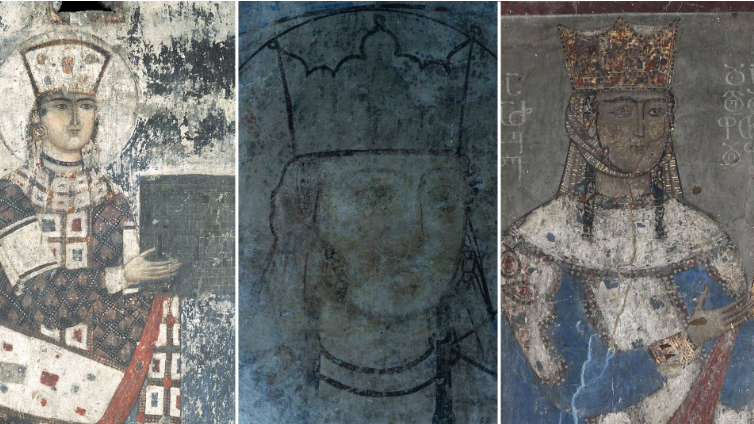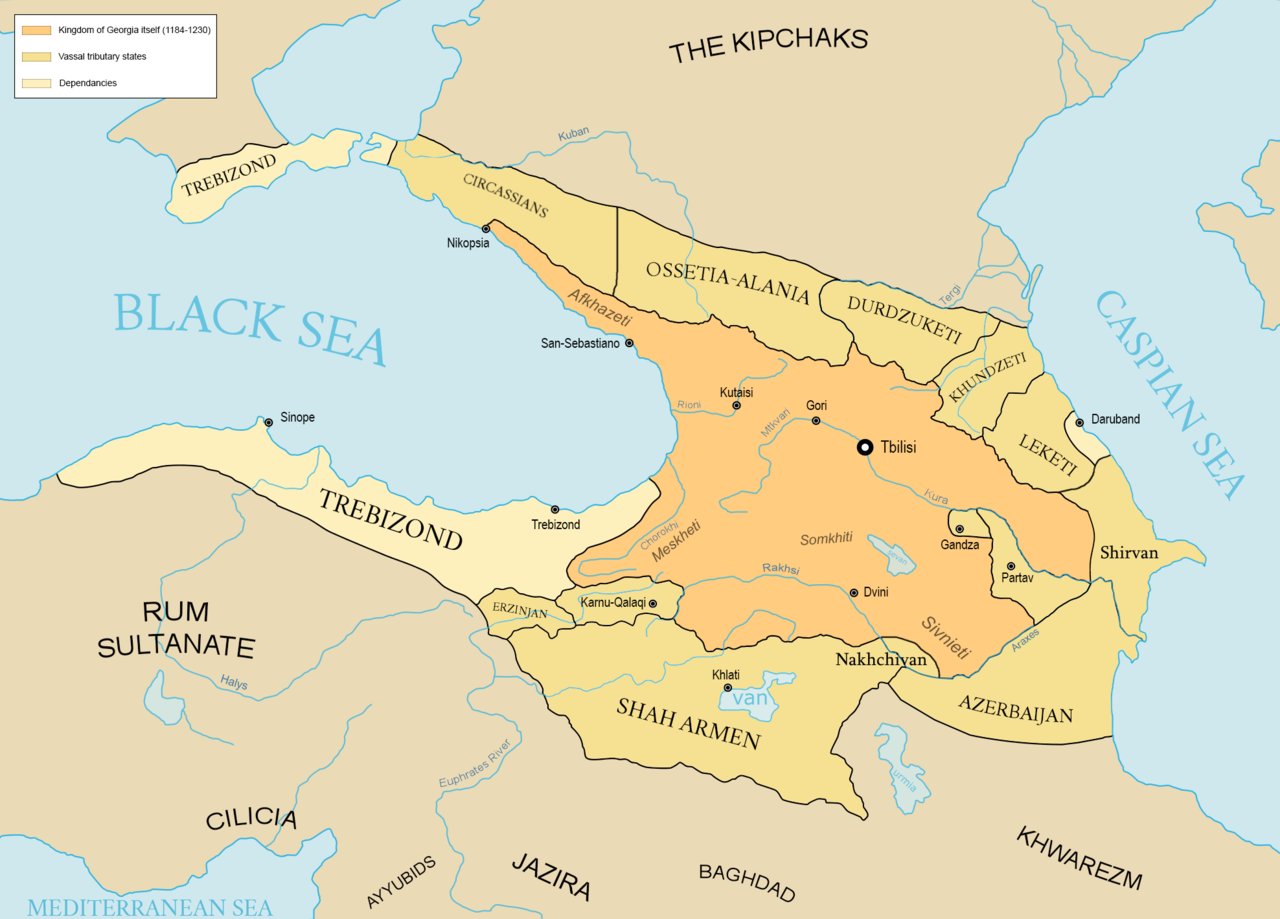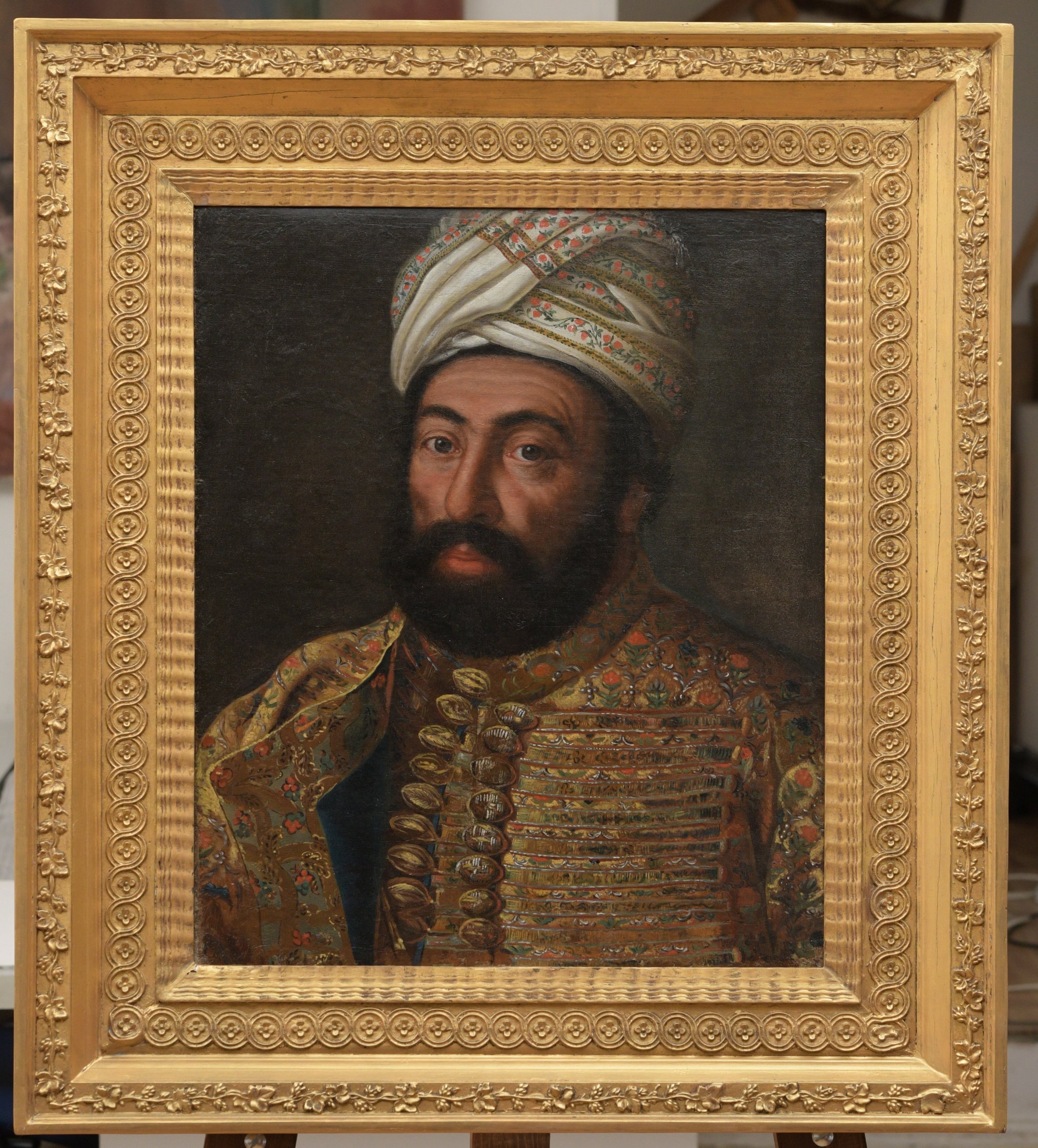In modern Georgian, one generally sees the form without /u/, or only in archaizing writing, but both მეუფე meupe and მეფე mepe coexisted since the very beginning of Georgian writing. It reflects an ongoing tendency to lose /u/ before labial consonants.
Conversation
Because the root უფ- up- is not found in Svan, it is only reconstructed to the immediate ancestor of Georgian, Georgian-Zan. The Zan cognates show both loss of /u/ and the standard Zan shift of *e > a:
Megrelian მაფა ma-p-a ruler
Laz მაფა ma-p-a ruler
1
8
As such, it may be that this root is in fact an ancient loanword from another Eurasian lg family. Similar forms are found in both Indo-European *h₂ep- take and Altaic *apV- take:
Hittite 𒂊𒅁 epp- take, seize
Sanskrit आप्त āpta reach, gain
Turkish avuč handful
Buriat aba- take
2
1
10
Be that as it may, the root is clearly ancient within Kartvelian. One thing this reconstruction makes clear is that მეფე mepe arose as a very generalized, genderless nominalization 'ruler' to refer to someone who possesses or controls the affairs of state.
2
1
12
This contrasts with English, in which the difference b/w 'king' and 'queen' was always inherently lexically gendered, part of the meaning of the word. In English this forced a four-way semantic contrast alien to Georgian: king-regnant, queen-regnant, king-consort, queen-consort.
2
1
10
The Georgian word მე(უ)ფე me(u)pe has always only been used to refer to the first two of these English sociolegal concepts: king-regnant and queen-regnant, i.e. the actual sovereign of a kingdom. It has never been used to refer to courtesy titles king-consort or queen-consort.
1
1
7
This has lead to a great deal of confusion both within Georgian historiography and in modern Georgian pop-culture, which so frequently alludes to the great personages of its past. This is because at least three women have held the title მე(უ)ფე me(u)pe.
1
1
9
By far the most famous of these, and the one most commonly cited in public discussions, is Tamar the Great, daughter of George III, scion of the Bagrationi family, who ruled at its apex between 1184 and 1213:

1
8
Though the first queen-regnant, medieval Georgian texts always insist that without question she was მეუფე meupe, or indeed because of her many various vassals and dependencies, she was მეუფე მეუფეთა meupe meupeta 'sovereign of sovereigns', playing on the Persian-style titulature.

2
2
11
These same texts, curiously, sometimes also use the gendered title დედოფალი dedopali 'queen' lit. [female-lord] (or დედოფალი დედოფალთა dedopali dedopalta) to refer to her. This is possible because her main title მეუფე meupe was not exclusively used for males.
1
7
After Tamar died, her son Giorgi IV Lasha took the throne, and after a brief reign, so did Tamar's daughter Rusudan. Rusudan was also explicitly considered მეუფე meupe, like her brother, mother, grandfather and ancestors before her, on her bilingual Arabic-Georgian coinage:

Replying to
Many centuries later, there was briefly a third woman who held the title მეფე mepe in her own right: Tamar II, daughter of Vakhtang VI of Kartli, she married her distant cousin Teimuraz II, King of Kakheti (pictured), first as queen-consort, and then from 1744-46 as queen-regnant

1
6
The genderless meaning of this title, and the fact that it is not equivalent to English 'king', is thrown into relief by the fact that it was not used for the few kings-consort of Georgian history, such as Tamar the Great's husband, the Ossetian prince David Soslan.


2
12
What these cases show is that not only did the word მე(უ)ფე me(u)pe originate as a genderless word for rulers, it was also used that way in practice for women who held actual power in their own right. The modern trend to call people like Tamar 'King' thus has no historical basis.
1
2
10
For linguists, it might have another implication: as often noted by , when trying to make comparisons between languages, we must have formally commensurable comparative concepts to do so. This example shows how the principle extends to lexical semantics.
2
7
